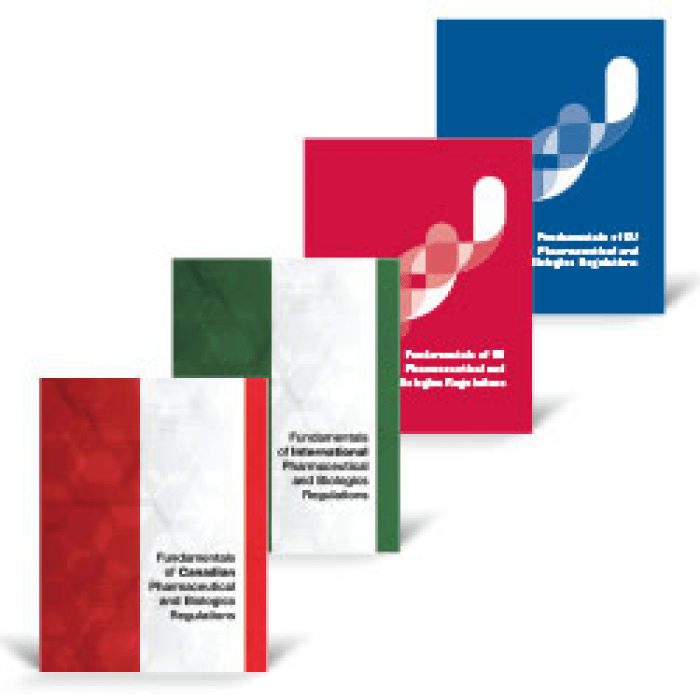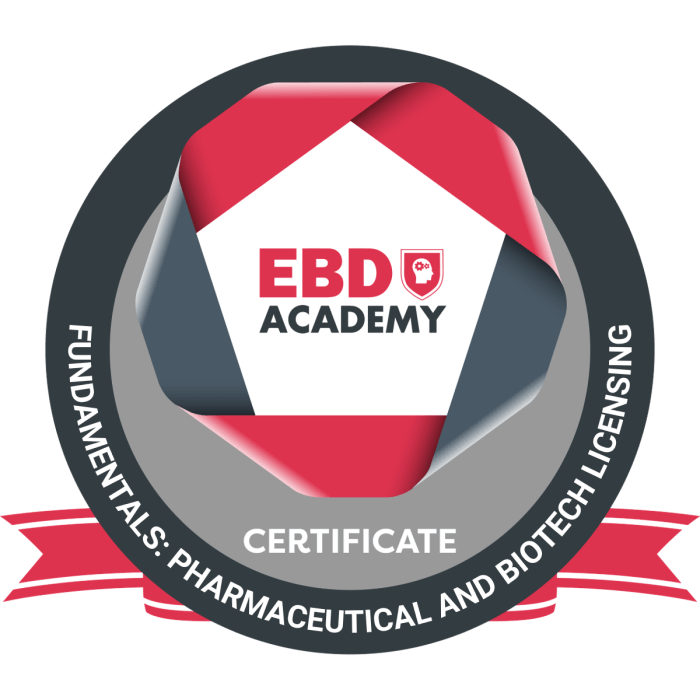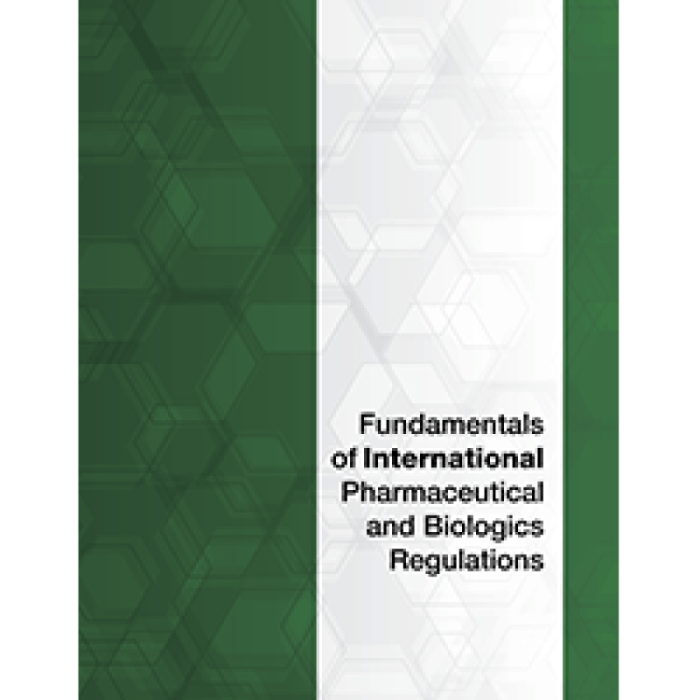Fundamentals of pharmaceutical and biologics regulations are paramount in ensuring the safety and efficacy of drugs and biological products. This comprehensive guide delves into the intricacies of regulatory frameworks, providing a thorough understanding of the processes and requirements involved in drug development, manufacturing, clinical trials, and post-market surveillance.
From the roles of regulatory agencies to emerging trends in personalized medicine and digital health, this guide offers a multifaceted perspective on the dynamic landscape of pharmaceutical and biologics regulations.
1. Regulatory Authorities: Fundamentals Of Pharmaceutical And Biologics Regulations

Regulatory agencies play a critical role in ensuring the safety and efficacy of pharmaceutical and biologic products. The US Food and Drug Administration (FDA) and the European Medicines Agency (EMA) are two of the most prominent regulatory bodies worldwide.
The FDA is responsible for regulating the development, manufacturing, and marketing of drugs, biologics, and medical devices in the United States. The EMA is responsible for the same tasks within the European Union. Both agencies have established comprehensive regulations to ensure the quality, safety, and effectiveness of these products.
International Harmonization Efforts
To facilitate global trade and improve patient safety, there have been significant efforts to harmonize pharmaceutical and biologic regulations internationally. The International Council for Harmonisation of Technical Requirements for Pharmaceuticals for Human Use (ICH) is a global organization that develops harmonized guidelines for the pharmaceutical industry.
These guidelines aim to ensure that drugs and biologics meet consistent standards of quality and safety worldwide.
2. Drug Development Process
The drug development process is a complex and time-consuming endeavor that involves several key stages. These stages include:
- Preclinical research: In this stage, researchers conduct laboratory and animal studies to evaluate the safety and efficacy of a potential drug.
- Clinical trials: Clinical trials are conducted on human subjects to further evaluate the safety and efficacy of a drug. There are different phases of clinical trials, each with specific objectives.
- Marketing approval: After successful completion of clinical trials, a pharmaceutical company submits an application to a regulatory agency for marketing approval. The agency reviews the data from the clinical trials and makes a decision on whether to approve the drug for marketing.
Each stage of the drug development process is governed by specific regulations to ensure the safety and well-being of patients.
3. Good Manufacturing Practices (GMPs)

Good Manufacturing Practices (GMPs) are a set of regulations that ensure the quality and safety of pharmaceutical products. GMPs cover all aspects of manufacturing, from the sourcing of raw materials to the distribution of finished products.
Regulatory agencies conduct inspections to ensure that pharmaceutical manufacturers comply with GMPs. Failure to comply with GMPs can result in regulatory action, including product recalls and fines.
GMP Requirements, Fundamentals of pharmaceutical and biologics regulations
- Personnel: GMPs require that personnel involved in the manufacturing process are adequately trained and qualified.
- Equipment: All equipment used in the manufacturing process must be properly calibrated and maintained.
- Facilities: The manufacturing facilities must be designed and maintained to prevent contamination and cross-contamination.
- Documentation: GMPs require that all manufacturing processes are documented and that records are maintained for review.
4. Clinical Trials
Clinical trials are an essential part of the drug development process. They provide valuable information about the safety and efficacy of a drug in humans.
Ethical Considerations
Clinical trials must be conducted in accordance with ethical guidelines to protect the rights and well-being of participants. These guidelines include the Declaration of Helsinki and the International Conference on Harmonisation (ICH) Good Clinical Practice (GCP) guidelines.
Regulatory Guidelines
Clinical trials are also subject to regulatory guidelines. These guidelines ensure that clinical trials are conducted in a scientifically sound and ethical manner. The FDA and EMA have established comprehensive regulations for clinical trials, including:
- Investigational New Drug (IND) application: An IND application must be submitted to the FDA before a clinical trial can begin.
- Clinical Trial Authorization (CTA): A CTA must be obtained from the EMA before a clinical trial can begin in the European Union.
- Institutional Review Board (IRB) approval: IRBs are independent committees that review and approve clinical trial protocols to ensure that they meet ethical and scientific standards.
5. Product Labeling and Advertising
Product labeling and advertising play a critical role in providing accurate and balanced information about pharmaceutical and biologic products to healthcare professionals and patients.
Regulatory agencies have established guidelines for product labeling and advertising to ensure that the information provided is truthful, accurate, and not misleading.
Labeling Requirements
Product labeling must include the following information:
- Name of the product
- Active ingredients
- Dosage and administration instructions
- Warnings and precautions
- Contraindications
Advertising Guidelines
Advertising for pharmaceutical and biologic products must be truthful, accurate, and not misleading. Advertisements must also be fair balanced, and not disparage competing products.
6. Post-Market Surveillance

Post-market surveillance is the process of monitoring the safety and efficacy of drugs after they have been marketed.
Regulatory agencies require pharmaceutical companies to conduct post-market surveillance studies to identify any adverse events or safety concerns that may not have been detected during clinical trials.
Pharmacovigilance
Pharmacovigilance is the science of detecting, assessing, understanding, and preventing adverse events associated with the use of pharmaceutical products.
Risk Management Plans
Risk management plans are required for all new drugs and biologics. These plans Artikel the potential risks associated with the product and the measures that will be taken to mitigate those risks.
Q&A
What are the key responsibilities of regulatory agencies in pharmaceutical and biologics regulations?
Regulatory agencies are responsible for evaluating the safety, efficacy, and quality of pharmaceutical and biologics products before they are marketed. They also monitor the safety of products after they are on the market and take action to protect public health if necessary.
What are Good Manufacturing Practices (GMPs)?
GMPs are regulations that ensure the quality and safety of pharmaceutical products. They cover all aspects of manufacturing, from the raw materials to the finished product.
What are the ethical considerations in conducting clinical trials?
Clinical trials must be conducted in a safe and ethical manner. Participants must be fully informed of the risks and benefits of the trial and must give their consent to participate.